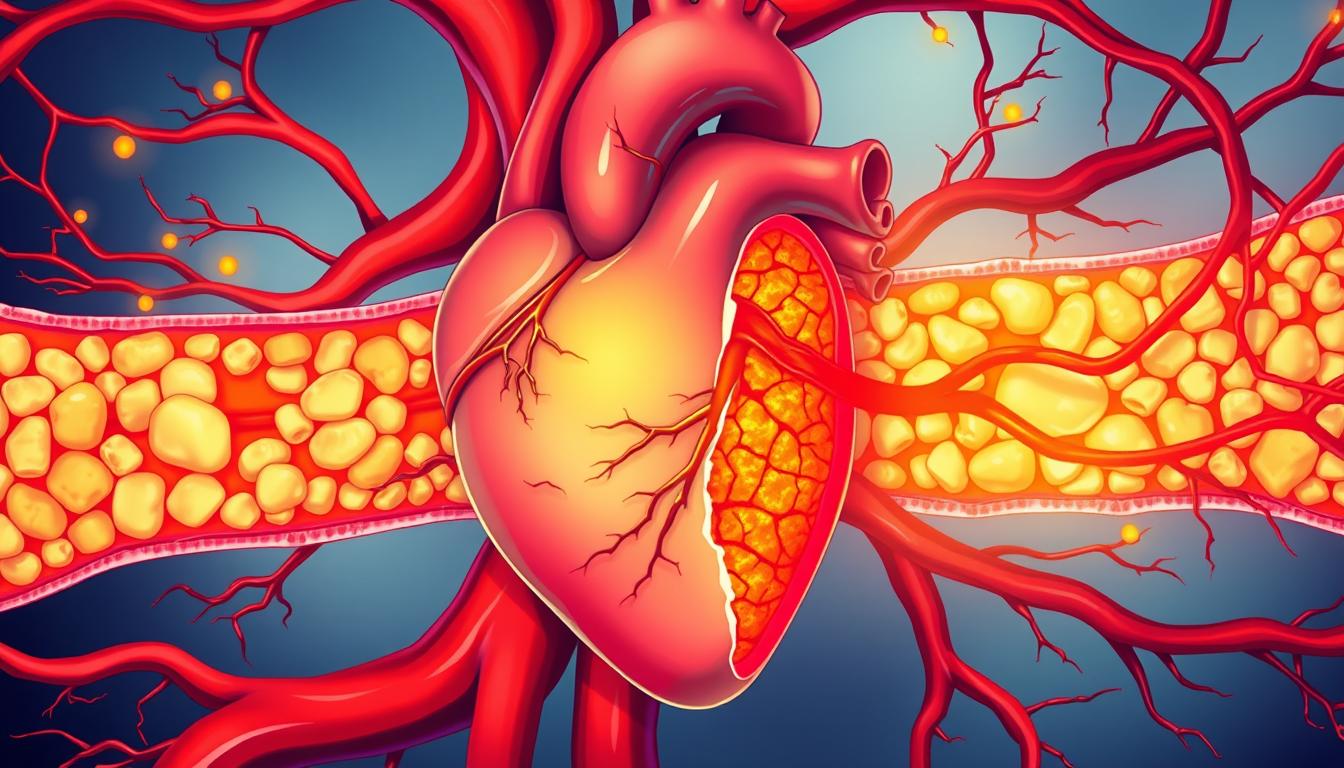Ever wondered why some days you’re full of energy, ready to tackle your goals? Others, you just can’t get out of bed? The answer is in the world of motivation science. This field is key to unlocking your full potential and achieving personal growth like never before.
Motivation drives our actions, pushing us towards self-improvement and achieving our goals. By understanding the science behind it, you can use this power to change your life. You’ll reach new heights in your personal and professional life.
In this journey into motivation science, we’ll explore the psychological and neurological factors that shape your drive. You’ll learn practical ways to boost your motivation and overcome obstacles. You’ll also discover how to cultivate a success mindset. Get ready to discover yourself and unlock the secrets to lasting motivation and personal growth.
Key Takeaways
- Motivation science explains the driving force behind human actions
- Understanding motivation can lead to significant personal growth
- Psychological and neurological factors play crucial roles in motivation
- Scientific principles can help boost and sustain motivation
- Applying motivation science can unlock your full potential
- Goal achievement is closely linked to understanding motivation
Understanding the Fundamentals of Motivation
Motivation is what drives us to act and behave. It’s the force that pushes us to reach our goals and face challenges. Let’s dive into the core of motivation and find out what drives us.
Defining Motivation: What It Is and Why It Matters
Motivation is the reason behind our actions. It’s the spark that makes us want to pursue goals and change our lives. Knowing about motivation is key for personal growth and success in many areas of life.
The Psychological Basis of Motivation
Psychological motivation involves complex mental processes that shape our behavior. It’s based on our thoughts, feelings, and experiences. By understanding these factors, we can tap into our motivational power.
Intrinsic vs. Extrinsic Motivation: Key Differences
Intrinsic motivation comes from within, driven by personal satisfaction or enjoyment. Extrinsic motivation, however, comes from outside rewards or pressures. Both are important in our daily lives.
| Intrinsic Motivation | Extrinsic Motivation |
|---|---|
| Personal interest | Rewards or incentives |
| Sense of accomplishment | Fear of punishment |
| Enjoyment of the task | Recognition from others |
| Self-improvement | Deadlines or competition |
By grasping these basic aspects of motivation, you can find your own motivators. Whether it’s from within or outside, knowing your motivation is crucial to reaching your full potential.
The Neuroscience of Motivation: How Your Brain Drives Action
Your brain is key in driving motivation and action. The study of motivation shows how brain paths shape our actions. Knowing this can help you reach your goals.
The brain and motivation are closely connected through complex networks. When you’re motivated, certain brain areas light up. They release chemicals that drive you to act.
Dopamine is a major player in the brain’s reward system. It rises when you enjoy something. This helps you want to do things that feel good. Knowing how dopamine works can help boost your motivation.
“The brain’s reward system is like a built-in motivational engine, constantly pushing us to seek out positive experiences and avoid negative ones.”
Studies have found important brain areas for motivation:
- Prefrontal cortex: Helps with planning and making decisions
- Nucleus accumbens: Part of the reward circuit
- Amygdala: Deals with emotions and motivation
- Hippocampus: Helps with memory and motivation
Knowing about these brain parts and their roles can help you stay motivated. Techniques like visualization and setting goals can activate these paths. They help you stay focused and driven.
Key Theories of Motivation in Psychology
Learning about motivation theories can unlock your potential and lead to success. Let’s dive into four key ideas that shape our drive.
Maslow’s Hierarchy of Needs
Maslow’s hierarchy says people are driven by five types of needs. These needs go from basic needs to self-actualization. Meeting lower needs pushes you to aim for higher ones.
Self-Determination Theory
Self-determination theory is all about intrinsic motivation. It says you’re most driven when you feel capable, connected, and in control. This theory stresses the value of personal growth and happiness.
Expectancy Theory
Expectancy theory connects motivation to what you believe will happen. You’re more motivated if you think your efforts will get you what you want. It shows how what you think affects your actions.
Goal-Setting Theory
Goal-setting theory shows the power of clear goals. Having specific, challenging goals boosts your motivation and performance. This method is used in personal and work settings.
| Theory | Key Focus | Application |
|---|---|---|
| Maslow’s Hierarchy | Needs satisfaction | Personal growth |
| Self-Determination | Intrinsic motivation | Well-being |
| Expectancy | Outcome beliefs | Performance |
| Goal-Setting | Clear objectives | Achievement |
By grasping these motivation theories, you can find ways to boost your drive and reach your goals better.
The Role of Dopamine in Motivational Processes
Dopamine is a key player in our motivation. It drives our actions and decisions. When we achieve a goal or enjoy something, dopamine is released. This makes us feel rewarded and satisfied.
The brain’s reward system is closely tied to dopamine. It motivates us to do things that bring good results. As we go about our day, our brain checks our actions and rewards us with dopamine for the good ones.
Knowing how dopamine impacts motivation can help you stay motivated. By setting and reaching small goals, you get more dopamine. This can start a cycle of more motivation and success.
Dopamine is like the fuel that keeps our motivational engine running.
Dopamine is important, but it’s not the only factor in motivation. Other brain chemicals also affect our mood and actions. Understanding how these chemicals work together can give us insights into our motivation.
By using dopamine and the reward system, you can find ways to boost your motivation. Remember, lasting motivation comes from a mix of inside and outside factors. Dopamine helps make this happen.
Identifying and Overcoming Motivational Barriers
Everyone faces motivation obstacles at some point. Understanding these challenges is the first step to conquering them. Let’s explore common roadblocks and effective strategies to keep you moving forward.
Common Obstacles to Motivation
Motivation hurdles can take many forms. Fear of failure, lack of clear goals, or feeling overwhelmed often hold people back. Procrastination and self-doubt are also frequent culprits. Recognizing these barriers is crucial for overcoming them.
Strategies for Breaking Through Mental Blocks
Overcoming mental blocks requires a toolkit of motivation strategies. Break large tasks into smaller, manageable steps. Set realistic deadlines and reward yourself for progress. Practice positive self-talk to combat negative thoughts. Remember, small victories lead to big wins.
Developing a Growth Mindset for Sustained Motivation
A growth mindset is key to long-term motivation. Embrace challenges as opportunities to learn and grow. View failures as stepping stones to success. Cultivate curiosity and a love for learning. This mindset shift can transform obstacles into exciting challenges.
- Embrace challenges as growth opportunities
- Learn from setbacks instead of being discouraged
- Focus on effort and improvement, not just results
- Seek feedback and use it to enhance your skills
By implementing these strategies and nurturing a growth mindset, you’ll be better equipped to tackle motivation obstacles head-on. Remember, motivation is a skill you can develop with practice and persistence.
The Power of Goal Setting in Motivational Science
Goal setting is key to boosting motivation and success. Setting clear goals gives you a roadmap to success. Studies show that effective goal setting keeps people motivated and helps them achieve their goals.

The SMART goals framework is a great tool for setting goals. It makes sure your goals are Specific, Measurable, Achievable, Relevant, and Time-bound. Using SMART goals boosts your chances of success and keeps you motivated.
“Goals are the fuel in the furnace of achievement.” – Brian Tracy
Motivation and goals go hand in hand. Setting meaningful goals gives you purpose and fuels your motivation. This cycle of goal setting and motivation leads to better performance and growth.
| Goal Setting Technique | Impact on Motivation | Benefits |
|---|---|---|
| SMART Goals | High | Clarity, Focus, Measurable Progress |
| Stretch Goals | Moderate to High | Increased Ambition, Personal Growth |
| Process Goals | Moderate | Consistent Progress, Habit Formation |
To get the most from goal setting, break big goals into smaller tasks. This keeps you motivated by giving you a sense of accomplishment. The secret to lasting motivation is setting goals that challenge you but are still reachable. Make sure they match your values and dreams.
Harnessing the Power of Habits for Consistent Motivation
Habits are a strong way to keep motivation going. By creating good routines, you lay a solid base for lasting change. This makes it simpler to keep moving towards your goals.
Motivation habits are crucial for lasting success. They help you make decisions without thinking too much. This lets you tackle harder tasks and stay motivated.
To start building good routines:
- Find small, easy actions that match your goals
- Choose specific times or events to do these actions
- Do them every day for at least 21 days
- Keep track of how you’re doing to stay on track
Building routines takes time. Start with one or two habits and add more as you get better. This way, you keep your motivation up and make lasting changes.
| Habit Type | Example | Benefit |
|---|---|---|
| Morning Routine | Meditate for 10 minutes | Improved focus and clarity |
| Work Habit | Set daily priorities | Enhanced productivity |
| Health Habit | Drink water before meals | Better hydration and portion control |
By using these tips every day, you build a strong system for staying motivated. Embrace the habit-forming journey, and you’ll see your motivation and productivity grow.
The Impact of Environment on Motivation Levels
Your surroundings greatly affect your motivation. Environmental psychology reveals that the places we are in can change our drive and productivity. Let’s see how different environments impact your motivation.
Creating a Motivating Physical Space
The design of your workspace can either help or hurt your motivation. A clean, bright area with comfy chairs can boost focus and energy. Adding plants or art can make the space more inviting, inspiring you to work with excitement.
The Influence of Social Surroundings on Drive
Social influence is a big motivator. Being around driven people can push you to do better. Work with people who share your goals or join groups that support your aims. This positive social circle can boost your ambition and keep you on track.
Digital Environments and Their Effect on Motivation
In today’s world, digital motivation is key. Online platforms can either distract or motivate. Use apps to track your progress and set reminders. Join online groups that support your goals. But be careful with social media, as it can sometimes lower motivation.
By understanding and improving these environmental factors, you can make spaces that help you succeed. Remember, your surroundings shape your mindset. Choose wisely to boost your drive and potential.
Motivation Techniques Backed by Scientific Research
Discover powerful evidence-based motivation techniques that can transform your life. Scientific research has unveiled several strategies to boost your drive and achieve your goals.
Visualization is a potent tool in your motivational arsenal. Picture yourself succeeding in vivid detail. This practice activates the same brain regions involved in actual task performance, priming you for success.
Positive self-talk is another research-backed strategy. Replace negative thoughts with encouraging ones. Studies show this can significantly improve performance and motivation levels.
Implementation intentions are a game-changer in evidence-based motivation. Instead of vague goals, create specific if-then plans. For example, “If it’s 7 AM, then I’ll go for a 30-minute run.” This technique has been proven to increase goal achievement rates dramatically.
“The way to get started is to quit talking and begin doing.” – Walt Disney
Try the “temptation bundling” method. Pair a task you need to do with something you enjoy. This scientific motivation technique leverages the dopamine release from pleasant activities to boost motivation for less appealing tasks.
Embrace these research-backed strategies to unlock your full potential. Remember, motivation is a skill you can develop with practice and the right tools.
Measuring and Tracking Motivation for Personal Growth
Tracking your motivation is crucial for self-improvement. It shows you how far you’ve come and where you need to improve. Let’s look at ways to measure your motivation.
Tools and Methods for Assessing Motivation
There are many tools to check your motivation levels. Apps like Habitica make setting goals fun. Mood trackers like Daylio track your emotions.
For a detailed look, try motivation questionnaires or journaling. These methods offer a deeper understanding of your drive.
| Tool | Purpose | Features |
|---|---|---|
| Habitica | Goal tracking | Gamification, rewards system |
| Daylio | Mood tracking | Daily logs, trend analysis |
| Motivation Journal | Self-reflection | Prompts, progress tracking |
Using Data to Optimize Your Motivational Strategies
Using data to improve your motivation is key. Look at your tracking results to see what works. Adjust your goals or environment based on what you find.
This ongoing process makes your self-improvement efforts more effective.
![]()
The Benefits of Regular Motivational Check-ins
Regularly checking your motivation helps you grow. It keeps you focused on your goals and celebrates your achievements. It also helps you tackle challenges quickly.
“What gets measured gets managed.” – Peter Drucker
By using these tools and methods, you build a strong foundation for lasting motivation and self-improvement.
Conclusion
The journey through motivation science has shown us powerful tools to unlock our potential. We’ve learned about the brain’s role and key theories. These insights can fuel our drive and help us overcome barriers.
Both intrinsic and extrinsic factors are important in motivation. Setting clear goals and building positive habits are crucial. Creating supportive environments and regular self-assessments help you stay on track.
With this knowledge, you’re ready to take charge of your growth. By applying these concepts, you’ll be better prepared to face challenges and achieve your dreams. Your potential is waiting to be unleashed. It’s time to harness the power of motivation and make it happen.













